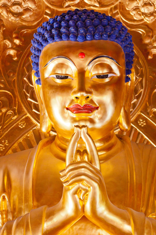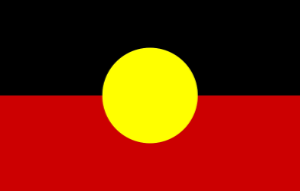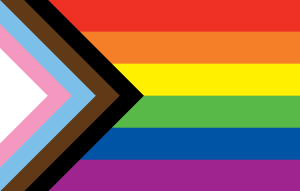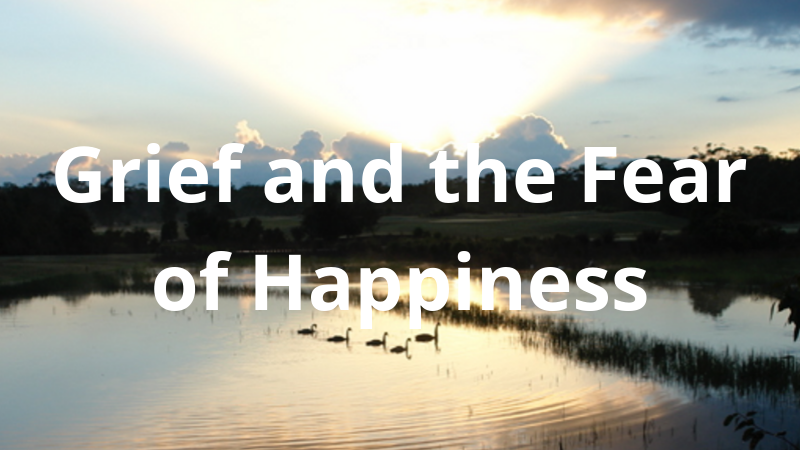Grief and the Fear of Happiness
 Fortunate children are born into a family that welcomes their birth. Their first exposure to emotional intensity may be to the indescribable happiness of their parents, and later, the joy of grandparents and the extended family which expands their welcome mat into the social world. There, as well as in their nuclear family, they will slowly learn to find their feet and the roles they will be expected to fulfil: son, daughter, sibling, grandchild, niece, nephew, neighbour, playmate, friend, student, boyfriend, girlfriend, professional, partner, husband, wife, parent, grandparent, voter…each role with its own challenges and rewards.
Fortunate children are born into a family that welcomes their birth. Their first exposure to emotional intensity may be to the indescribable happiness of their parents, and later, the joy of grandparents and the extended family which expands their welcome mat into the social world. There, as well as in their nuclear family, they will slowly learn to find their feet and the roles they will be expected to fulfil: son, daughter, sibling, grandchild, niece, nephew, neighbour, playmate, friend, student, boyfriend, girlfriend, professional, partner, husband, wife, parent, grandparent, voter…each role with its own challenges and rewards.
Whether the beginning of our life is in the bosom of a warm and loving family, or in one fraught with physical or emotional hardship, deprivation or trauma, it is a rare soul who reaches adult life without some emotional scar tissue. We learn, and often adopt, our family’s way of viewing the world, their way of judging people and interpreting events, of making sense of whatever life delivers. Family ‘mantras’ help to shape those interpretations.

Eastern philosophies and religions use mantras, repeated over and over, often rhythmically, to enhance spiritual connection, and, repeated often enough, they also have a psychological impact. Families in Western culture follow some similar practises to those of their Eastern brothers and sisters, and for the same reasons. For example, saying the rosary, reciting verses of scripture until they are familiar, or repeating formalised prayers and responses in religious services. Mantras are meant to be gifted like a spiritual benediction, to help lift us somehow to a higher level of consciousness, but unfortunately, that isn’t always the case.
Families tend to adopt a ‘mantra’ or saying, often far from lofty or spiritual, that summarises their life stance, and pass this on to ensuing generations via spoken words or behaviour. For example, ‘life wasn’t meant to be easy’, ‘never trust anyone who gives you compliments’, ‘always breast your cards’, ‘do unto others what you would have them do unto you’, ‘always look on the bright side of life’, ‘don’t count your chickens…’, ‘a stitch in time…’, ‘don’t get too big for your boots’, ‘don’t be too happy’, ‘pride comes before a fall’, ‘you’re as good as the next person’, ‘waste not want not’, ‘soldier on’, ‘duty before pleasure’, ‘if you can’t say something nice, don’t say anything’, ‘everyone has their reasons’ – the list is endless.
Many families, like mine, live their lives according to several different mantras, which can have the potential to create confusion. Fortunately, I can’t remember feeling confused. My dad’s mantras were ‘treat everyone and everything on earth with respect’, ‘love your fellow man’ and ‘don’t wait until your knees stop knocking to do what’s important’. My mother’s were slightly different – ‘love heals all wounds’, and ‘don’t be too happy (or let anyone see your happiness) or someone or something will take it from you’. My mother used to sing while she did housework, and if she got bad news after a particularly animated morning of singing, she’d say ‘I told you I shouldn’t be too happy’, convinced that her happiness had been snatched away by some malevolent, hovering presence. My sisters and I weren’t convinced, and with patronising sighs, dismissed her response as superstition, the result of her Irish heritage.
 We were more convinced by her belief that ‘love heals all wounds’. We made sure that every wounded animal or human we encountered found their way to her door and we basked in the glow of affection and popularity she received as a result. Lacking in life experience and wisdom, we only saw a part of the picture, never the price she paid for hearing other people’s stories, their pain piled in on top of her own. My mother’s childhood had included times of infinite sadness, and one of her survival skills was to internalise negative thoughts and feelings until her body eventually protested. But, until that physical event metaphorically ‘freed the bird from its cage’, my sisters and I marched naively into our adult life believing we could love all injured souls into permanent states of health and happiness. Life of course intervened and we traded in some of our naivety as the price for acquiring wisdom. For me, counsellor training at an early age facilitated and sped up the process.
We were more convinced by her belief that ‘love heals all wounds’. We made sure that every wounded animal or human we encountered found their way to her door and we basked in the glow of affection and popularity she received as a result. Lacking in life experience and wisdom, we only saw a part of the picture, never the price she paid for hearing other people’s stories, their pain piled in on top of her own. My mother’s childhood had included times of infinite sadness, and one of her survival skills was to internalise negative thoughts and feelings until her body eventually protested. But, until that physical event metaphorically ‘freed the bird from its cage’, my sisters and I marched naively into our adult life believing we could love all injured souls into permanent states of health and happiness. Life of course intervened and we traded in some of our naivety as the price for acquiring wisdom. For me, counsellor training at an early age facilitated and sped up the process.
Social Messages about Happiness
Some of the first social messages we receive about happiness come from bedtime stories and later from literature, music, movies, and plays. We learn that good triumphs over evil, and that if we make the right choices we will live happily ever after. To be ‘happy ever after’ can seem to be our right, and may become a personal and social goal.
We wear T shirts that spread the message ‘don’t worry, be happy’; we learn to ‘whistle as we work’; we take medicinal drugs that promise to help us soldier on no matter how ill we feel, and we glorify martyrs. Our society’s survival depends on its members being productive, and aspersions are cast on those whose unhappiness or inability appears to make them a burden we aren’t prepared to carry. We create a fertile environment for drug dependence as we pick up the silent or spoken message to ‘numb the pain’ by whatever means are at our disposal, and soldier on.
One of the most popular TV adds of all time is the one for Yellow Pages – ‘not happy Jan!’ It landed on and stuck to so many receptor sites that the saying has been absorbed into everyday language. An antidote to all the happiness adds perhaps?
Is a Permanent State of Happiness possible or desirable?
 A permanent state of happiness is not our ‘right’, or a desirable way of being.
A permanent state of happiness is not our ‘right’, or a desirable way of being.
We may struggle to conform to social and personal expectations to be happy, productive, creative, energetic, and uncomplaining all of the time, but those who adopt a permanent stance of obvious happiness are likely to be looked at with raised eyebrows. We may wonder if such folk are playing Pollyanna, wearing a mask, manic, delusional, filled with religious fervour, incapable of normal human responses, or ‘on something’. We may wonder if they need to be diagnosed and medicated to ‘bring them into line’, to make them more like the rest of us.
‘Normal’ in our society is more likely to be seen as the ability to feel all emotions and express them in an ‘acceptable way’ with ‘acceptable intensity’. It seems that contrast and change help us to be mentally and emotionally healthy and heighten our ability to experience life in all its fullness. For example, think of how differently we tend to experience day after night; warmth after cold; peace after conflict; replenishment after hunger and thirst; and joy after sadness.
When Kahlil Gibran was asked about joy and sorrow, he responded ‘Your joy is your sorrow unmasked. And the selfsame well from which your laughter rises was often filled with your tears. How else can it be? The deeper that sorrow carves into your being, the more joy you can contain.’
All emotions – the ability to feel, to care, to react, and the ability to respond are proof that we are alive, and involved in living. Moments of happiness are more realistic aims, each moment a treasure to store in memory for the tough times.
Anyone who has grieved the death of someone they love, someone central to their lives, understands how deeply sorrow has carved into their being.
Some have enough energy to rail against unfairness, especially if the death is sudden and unexpected, violent, deemed to be preventable, or of a life cut short.
‘Why me? What have I done to deserve this punishment?’ Others, more inward turning may ask ‘why not me?’
Inward or outward turning, the pain of grief affects every cell in our bodies, and leaves scars in our hearts and minds. Pain is confirmation of the depth of our attachment, the significance of our relationship, the closeness we still feel to the person who has left this aching, empty space. Yet we long for relief.
When it comes, at first like tiny bubbles that rise and quickly disappear, we find that relief is a two edged sword. Necessary, so we can catch our breath and re-pack our courage for the path ahead, but also fear inducing. Like an internal, symbolic judge, we generate painful questions: does my ability to laugh, to almost enjoy a moment, mean that I’m losing connection with the person I love? Was my love less pure and deep than I believed? If moments of relief become longer, will I forget important details?
Infinitely creative, we find our own unique ways of re-instating pain, the thread that reassures us we will love forever.
Regression and vulnerability create fertile ground for superstition. We may fear the dead person is watching us from a lofty vantage point, ready to inflict punishment if we dare to live when they can’t. Punishing questions and fears can become our points of ‘stuckness’ in grief. When that happens, we need to take another deep breath and ask ourselves a few rational questions: was the person I love malevolent? would they want me to suffer forever? does my fear of being happy honour their contribution to life? their contribution to my life?
If the person we love and their relationship with us was a celebration of life and living, how can we not go on? How can we not re-enter life in all its fullness? Don’t we honour them when we take them with us in the form of memories, when we value the gifts they gave us and multiply them, giving them back to life so that their contribution will live for as long as we have breath?
Happiness and sadness don’t have to cancel each other out; they can live side by side in the circle of all our other emotions. Grief may have changed the landscape of our lives, but it doesn’t have to prevent us living fully. Each moment of awareness, of appreciation of life; each time we dare to laugh as well as cry, we honour and give thanks for the life of the person we grieve.
Help
Help is always available – at ‘A Friend’s Place’ or by contacting our outreach service.
Dianne McKissock OAM
NCCG Outreach Support Service
Email support for dying and bereaved people and anyone involved in their care






